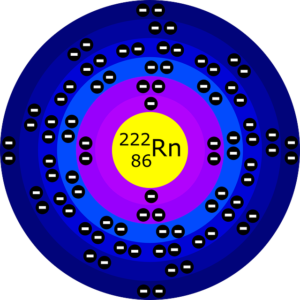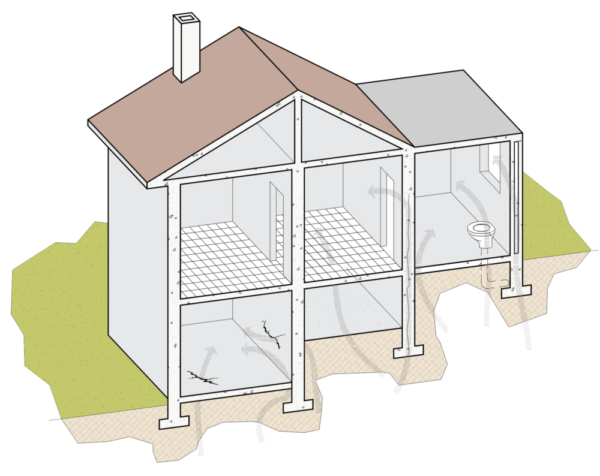
Radon is a naturally occurring radioactive gas that forms from the decay of uranium found in the Earth’s crust. Odorless, colorless, and tasteless, it is a dangerous gas because it can accumulate in enclosed spaces—such as homes and workplaces—without being detected, unless specific measuring instruments are used. Although naturally present, its concentration can become harmful to human health.
Where is Radon Found?
Radon is mainly released from the soil and can infiltrate buildings through cracks in floors, walls, pipes, or other openings. The most affected areas are basements and lower floors, although upper floors can also be exposed, albeit to a lesser extent. Radon can also be found in:
-
Well water: Water extracted from underground sources can contain radon, which is released into the air when the water is used for cooking or showering.
-
Building materials: Some construction materials, such as tuff or granite, can emit small amounts of radon.
-
Public water systems: Although in smaller quantities compared to other sources, tap water may contain traces of radon.

Presence of Radon in Everyday Environments
Radon is naturally present in outdoor air at generally low and harmless concentrations. However, in enclosed environments it can accumulate and reach high levels, posing a significant health risk. Private homes, as well as public buildings and workplaces, can be particularly vulnerable—especially in areas where the soil contains high levels of uranium.
Health Effects of Radon
Prolonged exposure to high levels of radon is considered one of the leading causes of lung cancer after smoking. Inhaling radon and its radioactive decay products can damage lung tissue, increasing the risk of developing lung cancer. According to the World Health Organization (WHO), radon is responsible for approximately 3–14% of lung cancer cases globally.
Smokers and former smokers are particularly vulnerable, as the combined effect of smoking and radon exposure significantly increases the risk of lung cancer compared to exposure to radon alone.
Reference Values and Regulations
In Italy, reference values for radon concentrations in buildings are established by both European and national regulations. Legislative Decree 101/2020 sets the following limits:
-
300 Bq/m³ (becquerels per cubic meter) as the maximum concentration level for existing residential or workplace buildings.
-
200 Bq/m³ for newly constructed buildings, for which preventive measures are recommended to avoid radon accumulation.
If measurements detect levels above 300 Bq/m³, mitigation actions must be taken to reduce concentrations and ensure occupant safety.
Italian Legislation

Italian law, in line with Euratom Directive 59/2013, requires regions and autonomous provinces to identify high-risk radon areas and carry out inspections in both public and private buildings. Specifically, Legislative Decree 101/2020 outlines specific protective measures for workplaces and residences, detailing monitoring procedures and the responsibilities of property owners and employers in the event that established limits are exceeded.
Conclusion
Radon represents an invisible but real health risk. Measuring and monitoring radon levels in homes and workplaces is essential to ensure a safe environment. If you have concerns about the presence of radon in your home or business, it is advisable to request a measurement test and, if necessary, take mitigation actions to reduce gas levels to safe values.


